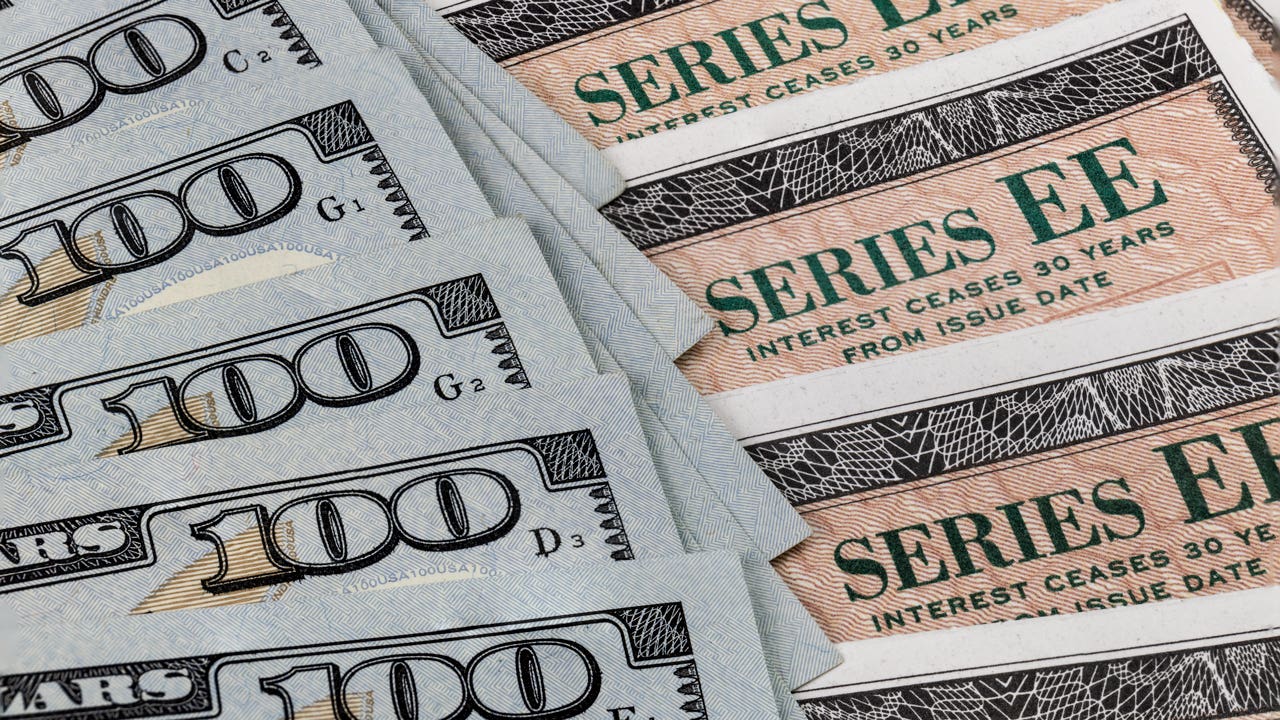CDs vs. bonds: How they compare and which is right for you




Key takeaways
- CDs and bonds are generally low-risk investments for savers wanting to earn a fixed interest rate and diversify their portfolios.
- CDs typically have compounding interest that is paid at maturity, while bonds usually pay interest in regular increments throughout the term length.
- Most CDs have strict early withdrawal penalties, but bonds can technically be sold before maturity on secondary markets.
Certificates of deposit (CDs) and bonds are both popular with savers since they’re low-risk investments that may pay slightly higher yields than traditional savings accounts. With both CDs and bonds, your money will often be tied up for a set period of time in exchange for a fixed rate of return.
While these two types of investments have many similarities, there are several fundamental differences to be considered when determining which of the two is right for you.
What are CDs?
A CD is a deposit account that usually pays a fixed annual percentage yield (APY) in exchange for locking up your money for a set period of time. CD terms typically range from three months to five years, and longer terms may pay higher yields than shorter ones.
CD yields tend to fluctuate along with the Federal Reserve’s benchmark interest rate. As such, the rates paid by many CDs have been increasing since the Fed began aggressively raising interest rates in February 2022. But as of late, many financial institutions are beginning to pare back their top-yielding CD rates in anticipation of the Fed lowering interest rates at its next meeting on Sept. 18.
How safe are CDs?
CDs are considered a safe investment since they pay a guaranteed rate — and your funds are protected from bank failure when your CD is backed by the Federal Deposit Insurance Corp. (FDIC) or the National Credit Union Administration (NCUA).
Funds are insured by the FDIC up to $250,000 per depositor, per FDIC-insured bank, per ownership category. The National Credit Union Share Insurance Fund (NCUSIF) covers up to $250,000 for each single ownership account.
One factor that can impact the fixed rates of CDs negatively, however, is inflation. Money tied up in a CD can lose purchasing power over time if the rate of inflation surpasses the interest rate.
Cashing in a CD before the term expires often results in an early withdrawal penalty. The longer the term of the CD, the more substantial that penalty tends to be. The fee amount is usually based on the interest the CD pays. For instance, an early withdrawal from a CD may cost you 90 or 180 days’ worth of interest.
When to choose a CD
A CD with a fixed term and guaranteed rate can be a good place for money you plan to spend down the line, such as a wedding, or the purchase of a house or car. Due to early withdrawal penalties, however, the money is not as easily accessible as funds in a savings account. This makes a liquid savings account a better option for money you may need for emergencies or other purchases in the short term.
Unlike bonds, a CD’s fixed term is guaranteed to pay a specific yield on a set date in the future. You can use a CD calculator to determine exactly how much interest you’ll have earned when the CD matures.
Because CDs usually pay fixed yields, a CD may be a smart option in a falling-rate environment. When rates are decreasing, you may be able to lock in a higher yield at the present time than what will be offered in coming months or years.
What are bonds?
When you invest in a bond, you’re effectively making a loan to the government or corporation that’s issuing the bond. In return, you receive interest payments over a set timeframe.
Bonds are often considered a necessary component of a diversified portfolio since they tend to carry less risk than stocks. The tradeoff for less risk, however, is a lower expected return.
Types of bonds include Treasurys, savings bonds, municipal bonds and corporate bonds.
Individual bonds are available for purchase, or you can choose to invest in bond mutual funds or exchange traded funds (ETFs). You can also acquire government bonds directly from the U.S. Treasury, which allows you to avoid the fees associated with buying through a broker.
How safe are bonds?
There are ways you can lose the money you’ve invested in bonds. If interest rates rise substantially, selling a bond before maturity might mean you won’t get the price you paid for it. Yet you’ll likely get the face value of the bond if you wait until it matures.
A bond may become worthless if the issuer defaults on the payment of the bond — such as when a company that issued a bond goes bankrupt. As such, it can pay to go with investment-grade bonds, which have earned a high rating from credit-rating agencies. Bonds such as Treasurys and U.S. savings bonds, however, are backed by the full faith and credit of the U.S. government.
Like CDs, bonds that pay a fixed return can be impacted negatively by inflation, since the purchasing power of the bond’s interest payment can go down if inflation increases.
An alternative to fixed-return bonds is U.S. government-issued Series I bonds, which help protect your investment by adjusting for inflation. The yields on these bonds rise and fall along with the rate of inflation.
When to choose bonds
Investors looking to diversify their portfolio may decide to put a set percentage of their money in bonds, since they generally carry lower risk than stocks. As retirement draws nearer, some choose to invest more heavily in bonds in hopes of receiving a steady return with little chance of losing money.
CDs vs. bonds
The following chart is a side-by-side comparison of CDs and bonds that shows where you can buy them, how the money is kept safe and the liquidity of the funds.
| CDs | Bonds | |
|---|---|---|
| Issuer | Banks or credit unions | Governments, municipalities or corporations |
| Purchase method | Purchased individually | Purchased individually or as part of an ETF or mutual fund |
| Term lengths | Months to years | Years to decades |
| Rate of return | Fixed rate with compounding interest (most common) | Fixed rate with regular interest payments (most common) |
| Safety | With CDs that are covered by the FDIC or NCUA, funds are insured up to $250,000 per depositor, per insured bank, for each account ownership category. | Treasurys and U.S. savings bonds are backed by the federal government, so they are very low risk.Corporate bonds are backed by each issuer and carry the risk of losing principal if the company defaults. It’s best practice to target corporate bonds from issuers with high credit ratings.Municipal bonds are backed by the city, county, state or other municipality that issued them. While generally safe, these bonds could go into default if the issuer files bankruptcy. |
| Minimum investment requirements | Varies by issuer but generally ranges from $0 to $1,000. | Individual bonds usually start at $1,000 but there are sometimes lower investment minimums for bonds purchased through an ETF or mutual fund. |
| Liquidity | Most CDs carry early withdrawal penalties, typically 90 to 180 days’ worth of interest. | Bonds have maturity dates, but most can be sold sooner on secondary markets. |
While CDs and bonds have various similarities — both are low-risk investments that often earn a fixed rate — there are several differences that can factor in when you’re choosing between the two:
Safety
Generally, both CDs and bonds can be safe investments. When you open a CD that’s insured by the FDIC or the NCUA, however, you’re guaranteed not to lose the money if the bank were to fail.
Treasury bonds and U.S. savings bonds are backed by the federal government. While the same is not true for alternatives such as corporate bonds, you can help minimize your chances of losing money by choosing bonds that have been rated investment grade by the credit-rating agencies.
Minimum investment requirements
If you don’t have a lot to invest, you may be able to find a CD that requires a low minimum balance — such as Citibank, which requires a minimum opening deposit of just $500. Other banks, such as Synchrony and Capital One, require no minimum deposit to open a CD.
The face value of bonds can vary based on the type of bond and when it matures. Some corporate bonds and Treasury bonds, for instance, hold a minimum face value of $1,000 — which is what you’ll pay to buy the bond.
One way to avoid paying a hefty minimum face value for a bond is investing in bond ETFs, which consist of a portfolio of bonds. This allows you to buy a single share in a bond fund at its trading price — and some brokers allow for the purchase of fractional shares.
Liquidity
The funds in most CDs cannot be accessed before the CD matures without your being subjected to an early withdrawal penalty. While bonds also carry a maturity date, you may be able to sell them on the secondary market before that date arrives.
Ultimately, funds you may need access to in the near future — such as for emergencies — may be best kept in a liquid savings account, such as a high-yield savings account.
Bottom line
Both CDs and bonds are generally safe investments, and both can help balance out a portfolio that also consists of riskier alternatives such as stocks. CDs and bonds may pay a slightly higher yield than traditional savings accounts — and when choosing between the two, it’s important to consider factors including safety, minimum investment requirements and liquidity.
–Freelance writer Drew Waterstreet contributed to updating this article.
You may also like




